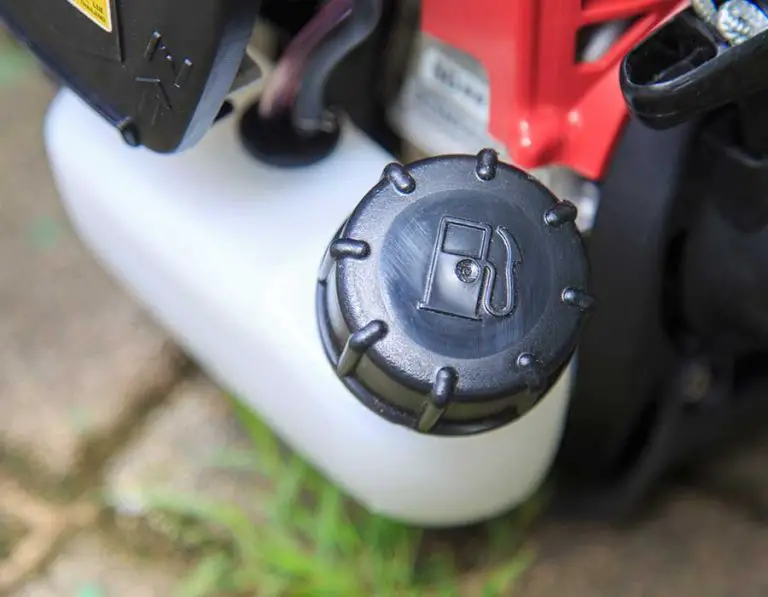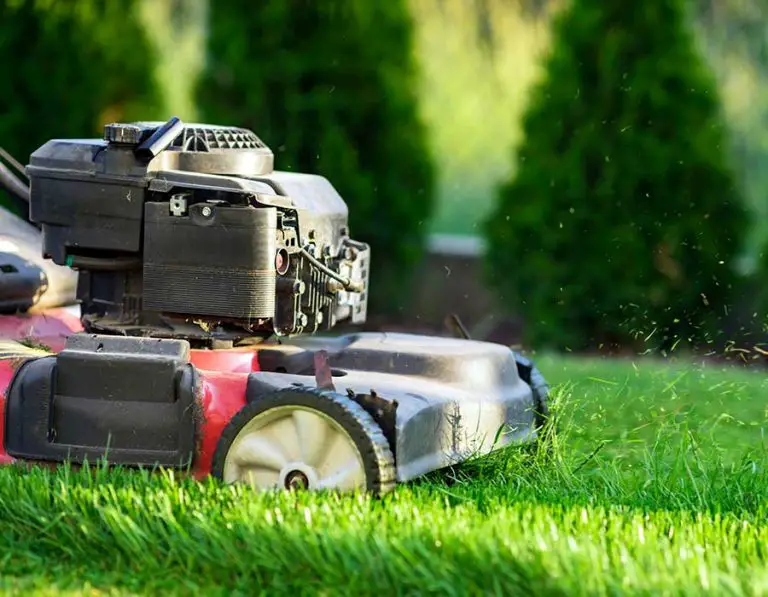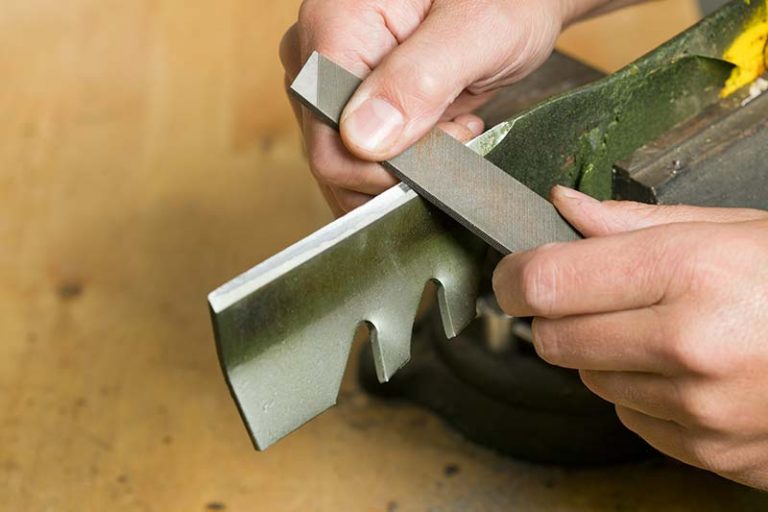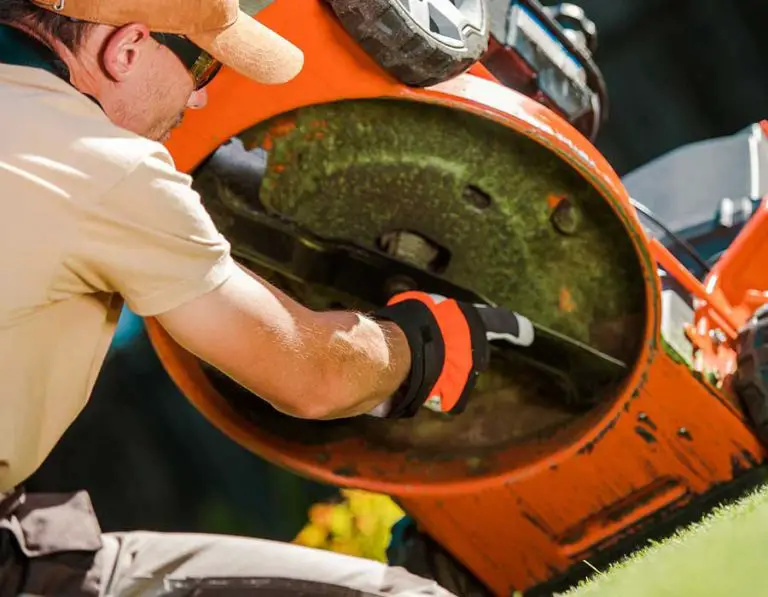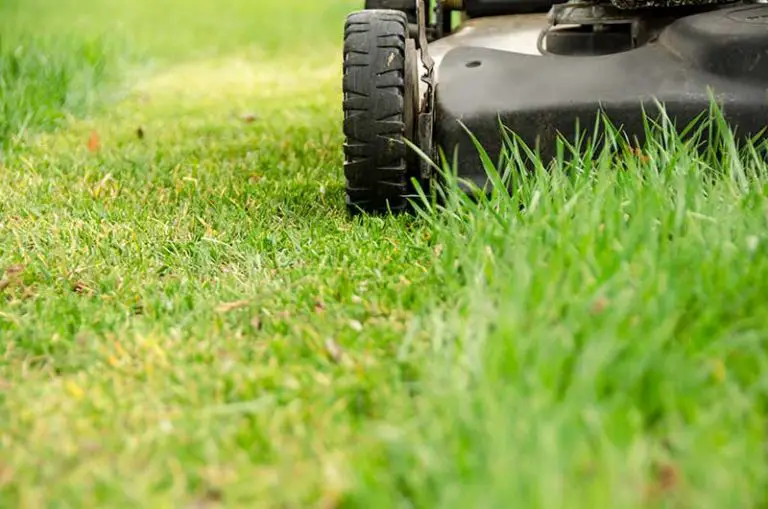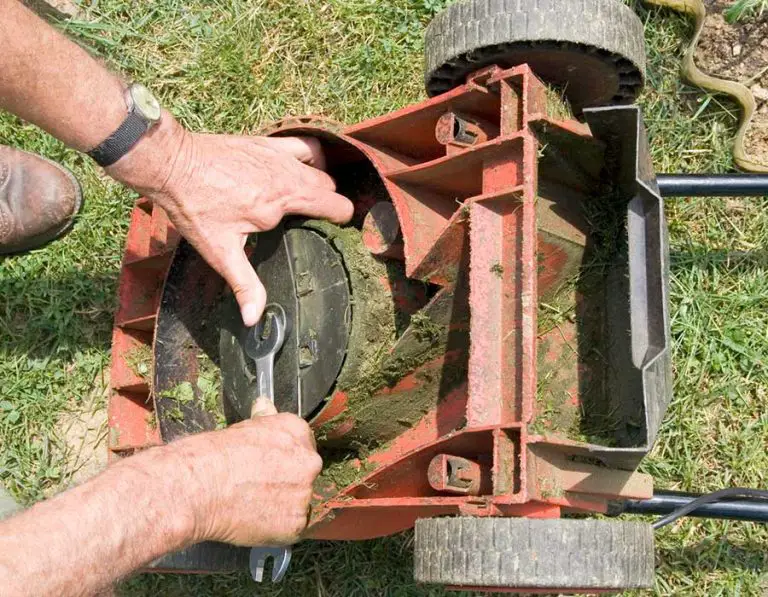Lawn Mower Won’t Start After Sitting for Winter
It’s not uncommon for equipment to lose functionality after sitting unused for extended periods of time. It can, however, be a nuisance, especially if the equipment is particularly expensive or hasn’t seen much use. When it comes to gardening equipment, especially of the electronic sort, it’s certainly more likely that it will suffer during the downtime over the winter months, regardless of whether it’s left in a shed or out in the open.
Different Types of Lawn Mower
When completing maintenance for your lawn mower, it’s important to know what type of lawn mower you have to ensure that the solutions you’re considering are appropriate for it.
Walk Mowers
There are many different types of walk mowers, including rotary mowers, cylinder mowers and push mowers. Their functionality and appearance differs widely between them and they are mostly categorized by the way they’re controlled by an individual walking behind them.
Power Mowers
Power mowers are similar to walk mowers but have a motor and power supply which allows them to run. They aren’t self-propelled like standard walk mowers and are usually more effective as a result. Power mowers are the most common type of lawn mower on the market and are the most saturated. They’re easy to find in stores and easy to store due to their more compact size. Power mowers can be powered using gas or electricity.
Ride On Mowers
Ride on mowers are, as the name suggests, more akin to vehicles than lawn mowers. They are large enough to sit atop of and are driven around lawns as they cut them. Ride on mowers come in a surprising variety of sizes and are often used for larger lawns. As the most expensive type of lawn mower available on the market, ride on mowers are not as commonly seen as the other types mentioned above. They are often powered by gas due to the size and amount of energy needed for use.
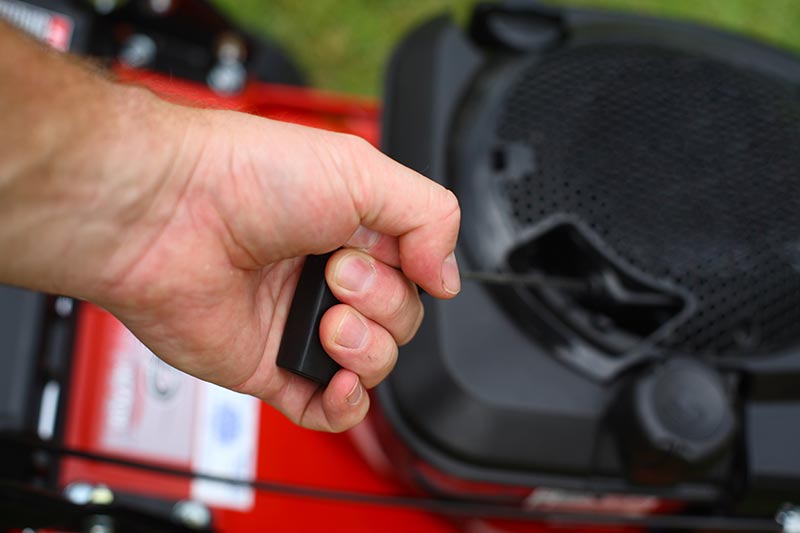
Lawn Mower Won’t Start After Winter
It’s unnecessary to mow the lawn during winter due to the speed in which grass grows during cold months. As a result, lawn mowers are often put out of commission for several months of the year as they simply aren’t needed. During these cold winter months, a lawn mower might suffer damage or neglect which could alter its functionality for when you do decide your lawn needs a spruce up in the spring.
There are several main issues that can affect lawn mowers after winter downtime.
Buildup in Carburetor
After an extended period of time, it’s possible that stale gasoline can build up and clog the carburetor. This can happen when the lawn mower hasn’t been in use for a while and leftover fuel is still inside. The fix is quite easy, and involves draining the fuel and cleaning the carburetor out. If it’s rusted, too clogged or otherwise too hard to clean, a replacement can easily be purchased. To avoid this issue in the future, ensure that all fuel is drained from the system before putting your lawn mower to the side during winter. It’s also advised to add stabilizer to fuel before adding it to the mower to slow down buildup inside the carburetor.
Stale Fuel in Float Bowl
Stale fuel in the float bowl sometimes occurs as a result of buildup inside the carburetor. If there are issues with the carburetor, it’s important to check on the health of the float bowl as well. If stale fuel is found in the float bowl, the solution is to simply clean it out and check if the carburetor is also free from clogs.
Battery Worn Out
All equipment with batteries run a risk of being worn out. Even if equipment is switched off, a battery won’t retain its full charge. When it comes to lawn mowers, the battery life on average is about five years. In order to keep a battery alive, it needs to be both used and recharged occasionally to keep it working correctly. If you find that the battery in your lawn mower is dead after being stored away for winter, it could just need a charge. If it refuses to work or retain any of this charge, it may need replacing. Luckily, lawn mower batteries are easy to order for the specific model you need.
Spark Plug
A lawn mower’s spark plug is a small but powerful piece of its structure that can easily change the way your lawn mower operates. They can easily corrode or become damaged during winter months due to the harsh weather – regardless of whether they’re kept under shelter or not. Once a spark plug is damaged or completely broken, it can prevent the lawn mower from running. Spark plugs are fairly inexpensive and can be easily replaced in a short period of time.
Blade Obstruction
One of the key components of any lawn mower is its blades. They are the one common factor connecting each and every type of mower on the market. As a result, blades allow lawn mowers to do their job and can greatly affect the efficiency of a lawn mower if they are altered in any way. Blade obstruction can occur over time as debris and grass clippings build up inside the mower’s system. The engine may not turn over and start if the blades are obstructed due to debris, which may harden or clog up the system whilst in storage. In order to solve this issue, raise your mower onto cinder blocks and clean the underside of the mower to remove any debris that may be clogging it. You can use tools such as a screwdriver to dislodge any stubborn dirt. Wrap the engine tightly in a garbage bag or other cover if you intend on hosing the lawn mower’s components down.
Choke
If your lawnmower has a throttle, make sure it’s set to choke to start the lawn mower off. Your choke settings can affect the performance of your lawn mower quite significantly, and may be the reason it is refusing to turn on. Whilst the choke may not have changed during the winter months, it is possible that debris that has clogged up the blades has made its way into the area which houses the throttle cable.
How to Start a Lawn Mower That Has Been Sat For a Long Time
A lawn mower that has been sat for a long time may need to have extra steps taken whilst starting it up to ensure that it works correctly. Depending on the type of lawn mower you use, it could take a little more than giving it a couple of extra pulls on the pull rope.
The first step when trying to start a mower that refuses to turn on is to check the oil. The fuel or oil inside a lawn mower can easily become stale if left for too long inside the tank. Due to the humidity of the lawn mower’s shelter,it can also lead to water condensing inside the fuel tank and mixing with the gas. Cleaning the affected areas out can increase the likelihood of your lawn mower returning to normal.
You can also prime your lawn mower after a prolonged period of unuse to try and get it up and running again. To prime your engine, look for the prime button. The button is usually located on the body of the lawn mower and should be pressed 3 or 4 times to replenish the system. Try not to press the button too much as it risks flooding the engine. If you find that your engine has been flooded, step away from the mower for 15 minutes to allow the fuel to pass through the interior.
These methods are often used after winter months when the lawn mower hasn’t been used.
Knowing how to start a lawn mower correctly is essential for when you begin to bring your equipment back out in spring.
Preparing a Lawn Mower for Winter
Winterizing a lawn mower can prevent issues from arising that can stop it from turning on. These steps should take no longer than an hour and can save you both money and time in the long run when it comes to setting your lawn mower up again for the first mow of the spring.
Step 1: Empty the Gas
Emptying the gas tank can prevent issues further down the line such as a clogged carburetor or stale fuel in the float bowl. To empty the gas tank, follow these simple steps.
- Add a stabilizer to the tank, and run the mower in order to distribute it throughout the system.
- Switch the mower off and leave it to allow it to cool down. Siphon the gas out from the tank using a siphon hose, and store it in a clean can.
- Restart the mower again and run it until it stops. Make sure to repeat this step until the lines are empty and it no longer turns on.
Step 2: Spark Plug
Disconnect the spark plug to ensure that the mower doesn’t accidentally kick-start whilst in storage. Additionally, you can add some insulating tape and tubing over the spark plug during the winter to reduce the risk of damage to it.
Step 3: The Blade
Removing the blade from the lawn mower can make it easier to change the fuel over again. You can easily remove the blade from beneath the lawn mower by unscrewing it from either side where it is held in place. Whilst the blade is removed, you can undertake additional maintenance by sharpening it, or by cleaning the underside of the lawnmower from any debris that may have built up.
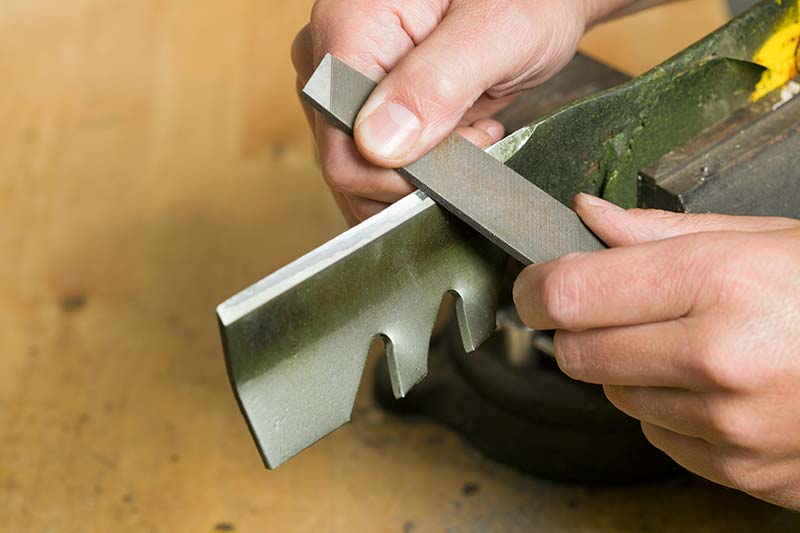
Step 4: Draining Oil
Draining the oil from your lawn mower requires several different steps to be taken. Not every type of mower requires this step to be taken, as it’s typically recommended for 4-cycle mowers. Make sure you have a pan or other container on hand to collect the oil.
- Lay the mower on its side, making sure that the air filter and carburetor are facing up.
- Remove the oil reservoir plug and slowly tilt the mower until the oil begins to flow into the pan.
- Wait for the oil to drain completely before replacing the plug and setting the mower back in its regular position.
Step 5: Clean the Undercarriage
The underside of a lawn mower can get extremely dirty and should be cleaned out whenever there’s opportunity, lest debris continues to accumulate and eventually block the blades of the lawn mower. Cleaning the undercarriage can be done with a blunt knife, or even a screwdriver in order to scrape the dirt off.
How to Store a Lawn Mower During Winter
Your lawn mower should be stored in a dry place during the winter to reduce any risks that can be expected if it were exposed to the elements. While lawn mowers can get wet to an extent, they won’t survive sitting out in a heavy rain. Lawn mowers often come with tarpaulin covers which can also be used as additional protection. A shed or garage are the safest and easiest places to store a lawn mower during the winter months as it removes exposure to the elements. However, if you have no access to these types of structures there are alternative ways to store a lawn mower outside.
Final Thoughts
After long periods of unuse, it’s easy for parts of a lawn mower to deteriorate or become dysfunctional. Despite these issues being fairly easy fixes, it’s always best to prepare for the winter by winterizing your lawn mower to prevent some of these problems from arising whilst it is in storage, to save both time and hassle when it comes to mowing your lawn for the first time again in the spring.

